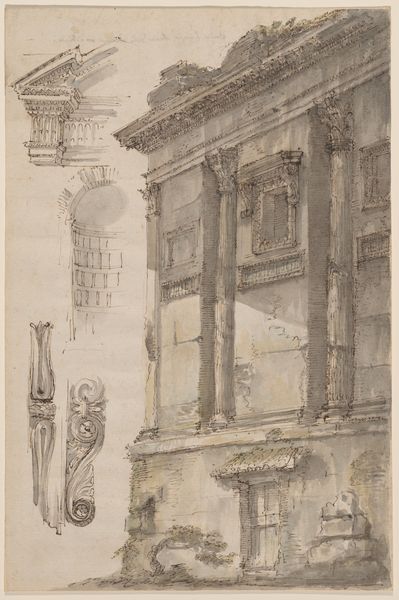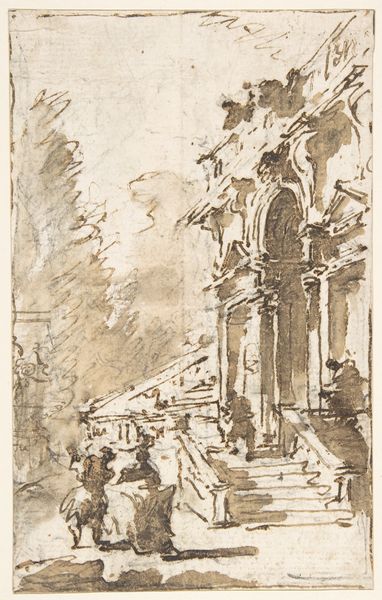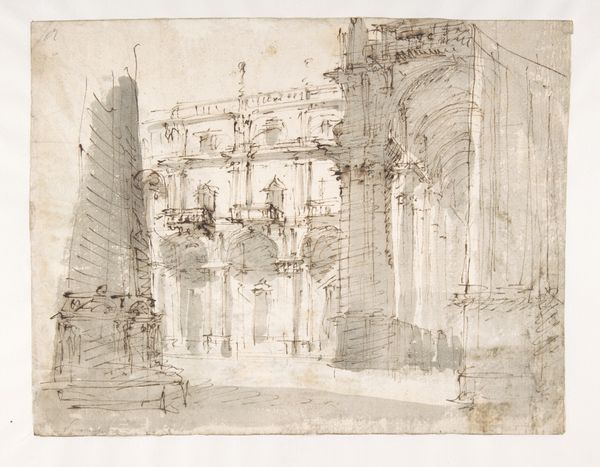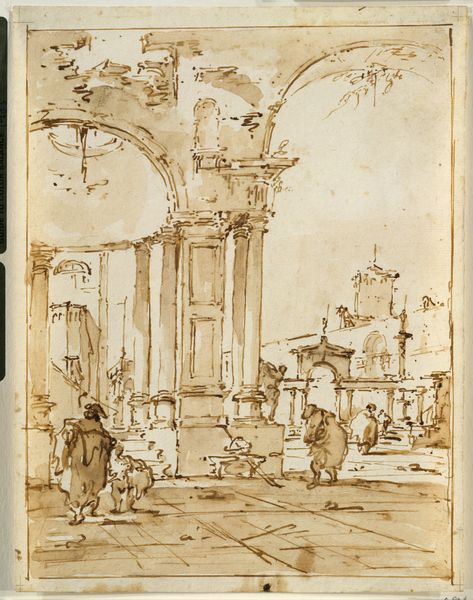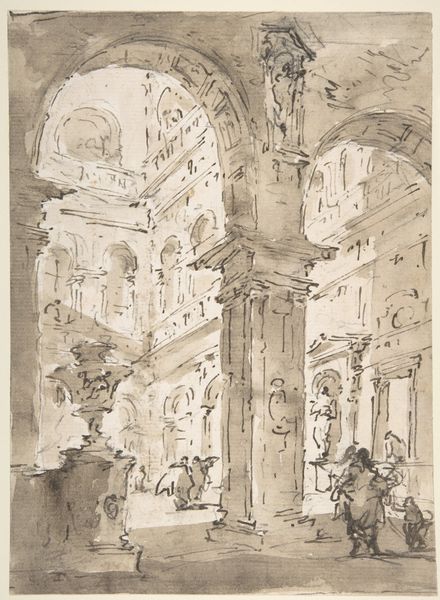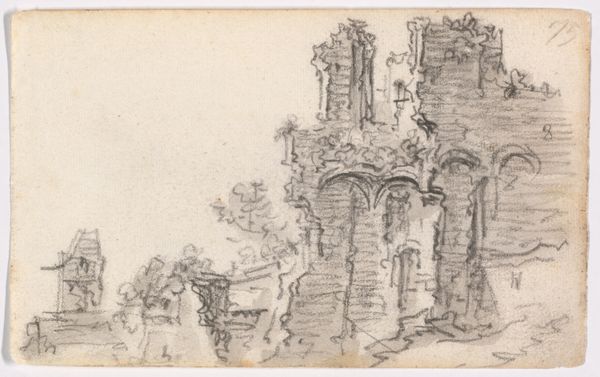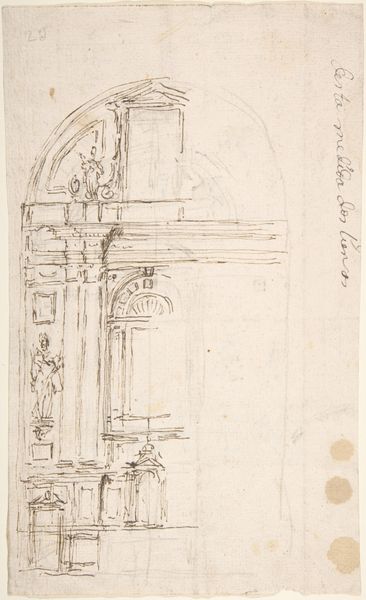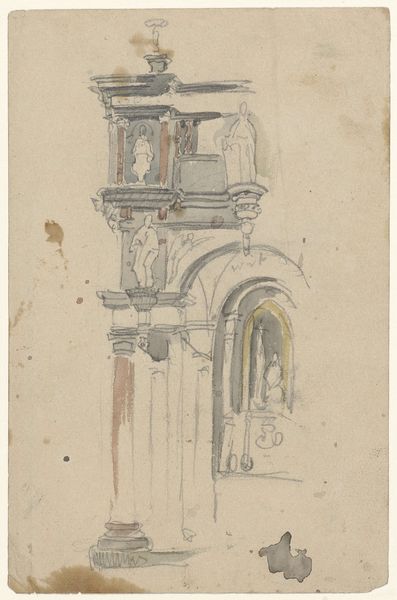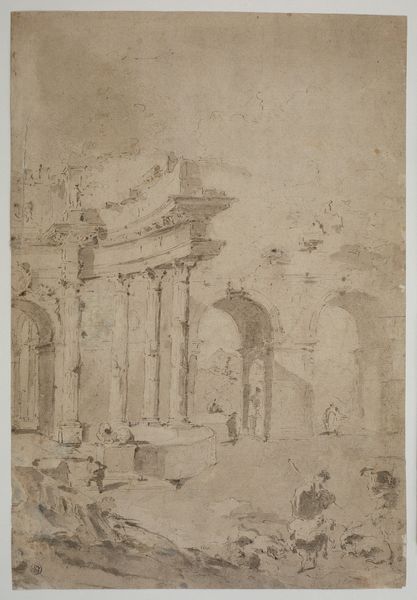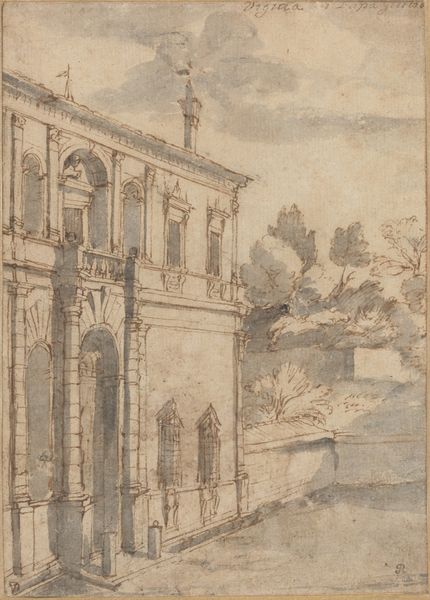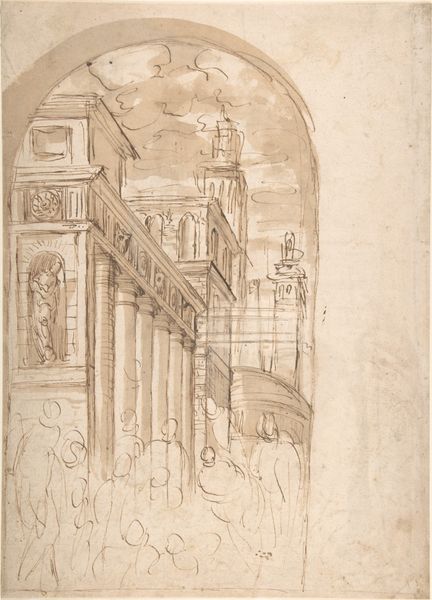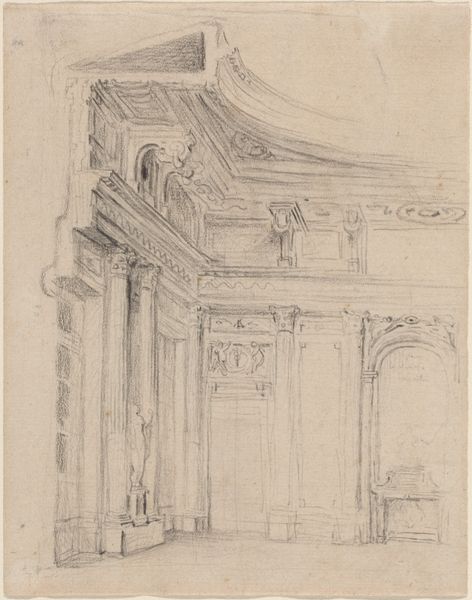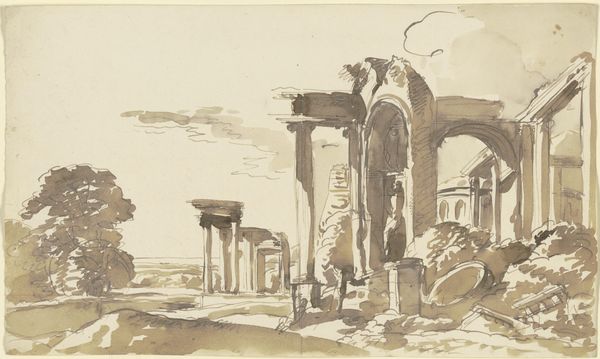
Capriccio with Architectural Ruins in Perspective 1700 - 1780
0:00
0:00
drawing, etching, paper, ink, architecture
#
drawing
#
ink drawing
#
baroque
#
etching
#
landscape
#
etching
#
perspective
#
paper
#
romanesque
#
ink
#
cityscape
#
history-painting
#
architecture
Dimensions: 6 15/16 x 6 1/4 in. (17.6 x 15.8 cm)
Copyright: Public Domain
Curator: This is an etching entitled "Capriccio with Architectural Ruins in Perspective." It’s attributed to an anonymous artist and dates roughly from 1700 to 1780. The medium here is particularly interesting; it employs both ink and etching on paper. Editor: My first impression is one of evocative decay, a once-grand cityscape rendered in fragile lines. I can almost feel the weight of history pressing down. Curator: Exactly! The crumbling Romanesque and Baroque architectural elements certainly evoke a sense of historical burden and the transience of power. This “capriccio,” as it’s called, is less a realistic depiction and more a playful rearrangement of historical and architectural signifiers. Who decides what pieces of art can tell stories? Editor: Given the use of etching, I’m thinking about the printmaking workshops of the period. Were these capriccios produced as individual artworks, or as models to guide builders or to influence taste through reproduced, disseminated images? The use of readily available materials and repetitive process gives us a new lense for production within the Romanesque style. Curator: That's a crucial point, raising the question of accessibility and the intended audience. Was this a critique of the elite's obsession with the past, or was it designed for them to admire and collect? And what labor practices went into such art pieces? Are they all elite or did lower class laborers also partake in the craftsmanship? Editor: The rough textures, the exposed beams and the sense of incomplete construction speak to the raw labor involved in building these monumental structures to begin with. I wonder if the artist intended to critique these unequal divisions by juxtaposing finished classical style elements against visible building construction? Curator: Absolutely, a work of its time that speaks to our time through art as a vehicle of understanding. The image really opens a discussion about power, representation, and whose narratives are being told—or erased—through our interpretation of ruins and the past. Editor: Looking at the materials employed and how they implicate certain workshops as a key step in architectural movements encourages a deeper dialogue on art production and material access as tools of influence during this period.
Comments
No comments
Be the first to comment and join the conversation on the ultimate creative platform.
